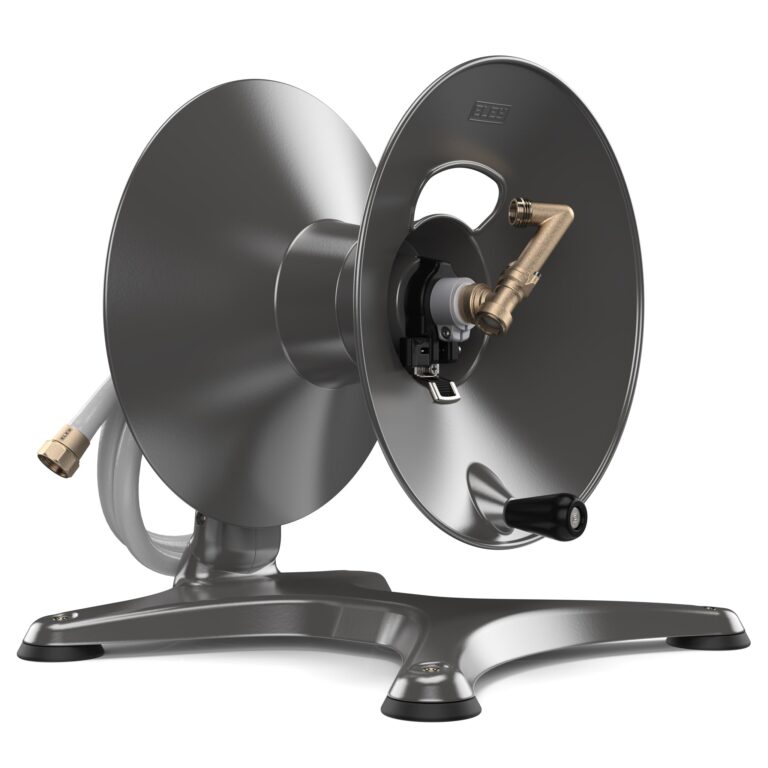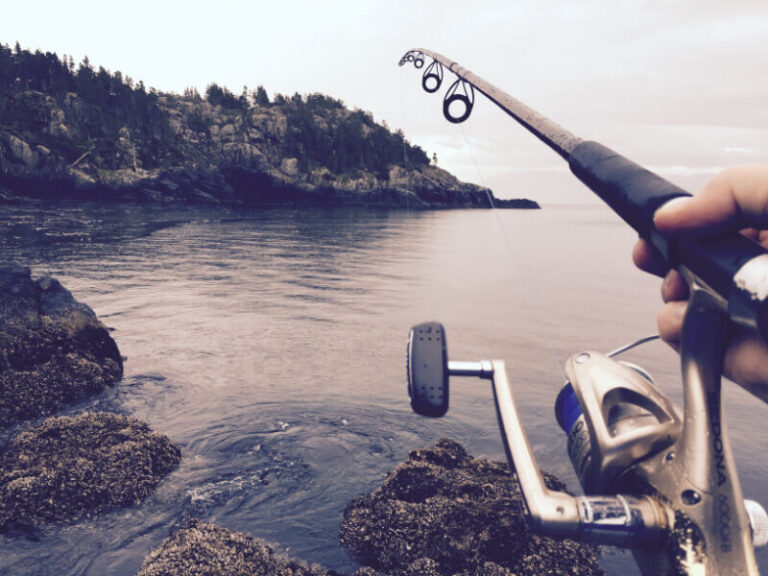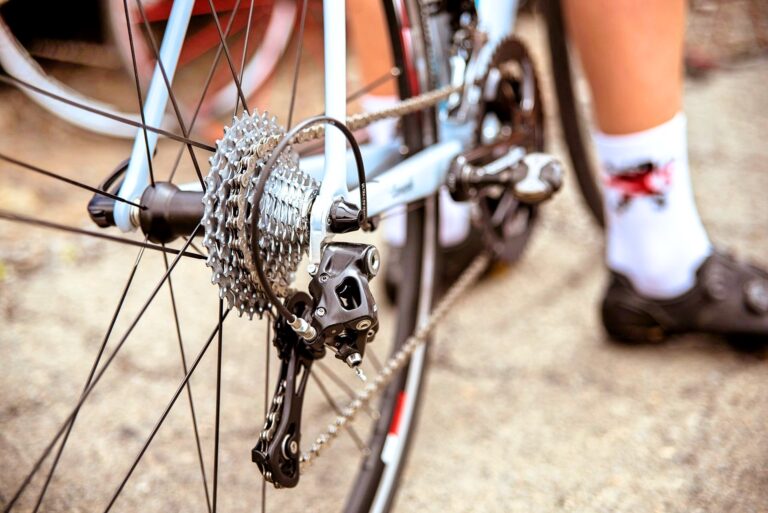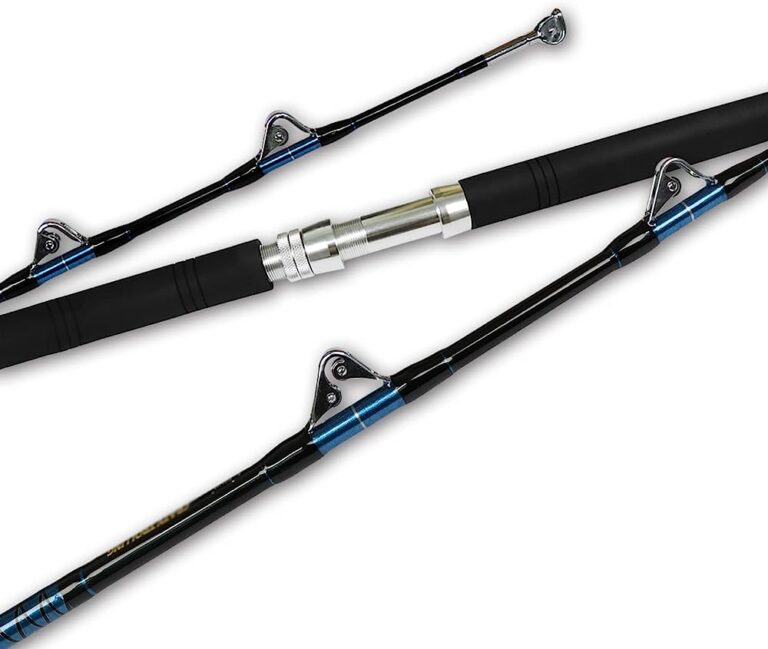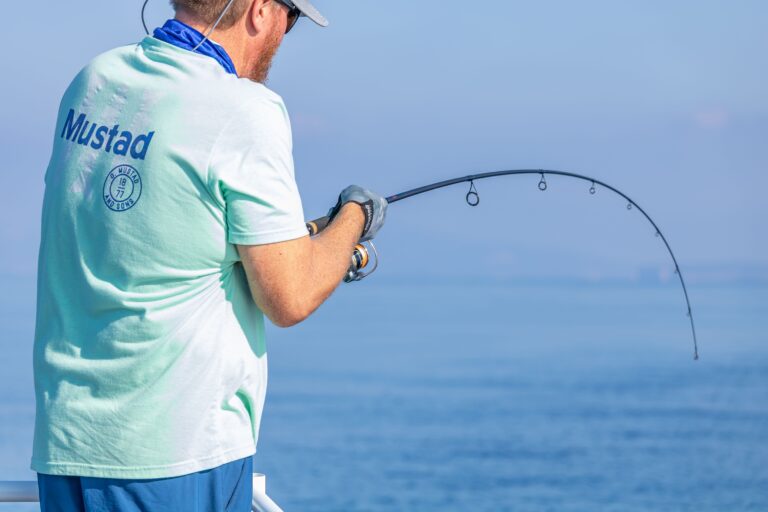To maintain a spinning combo for optimal performance, regularly clean and lubricate the reel and inspect the rod for any damage or wear. By maintaining your spinning combo, you can ensure smooth casting and reeling, prolong the lifespan of your equipment, and enhance your overall fishing experience.
Fishing with a spinning combo is an excellent way to enjoy the thrill of angling. However, to keep your gear in top condition and ensure optimal performance, regular maintenance is crucial. Neglecting proper maintenance can result in decreased casting distance, reduced sensitivity, and potential damage to your equipment.
By adhering to a few simple maintenance steps, you can extend the lifespan of your spinning combo and enhance your fishing success. We will discuss how to maintain your spinning combo for optimum performance. Read on to discover some helpful tips and techniques to keep your gear in top condition.
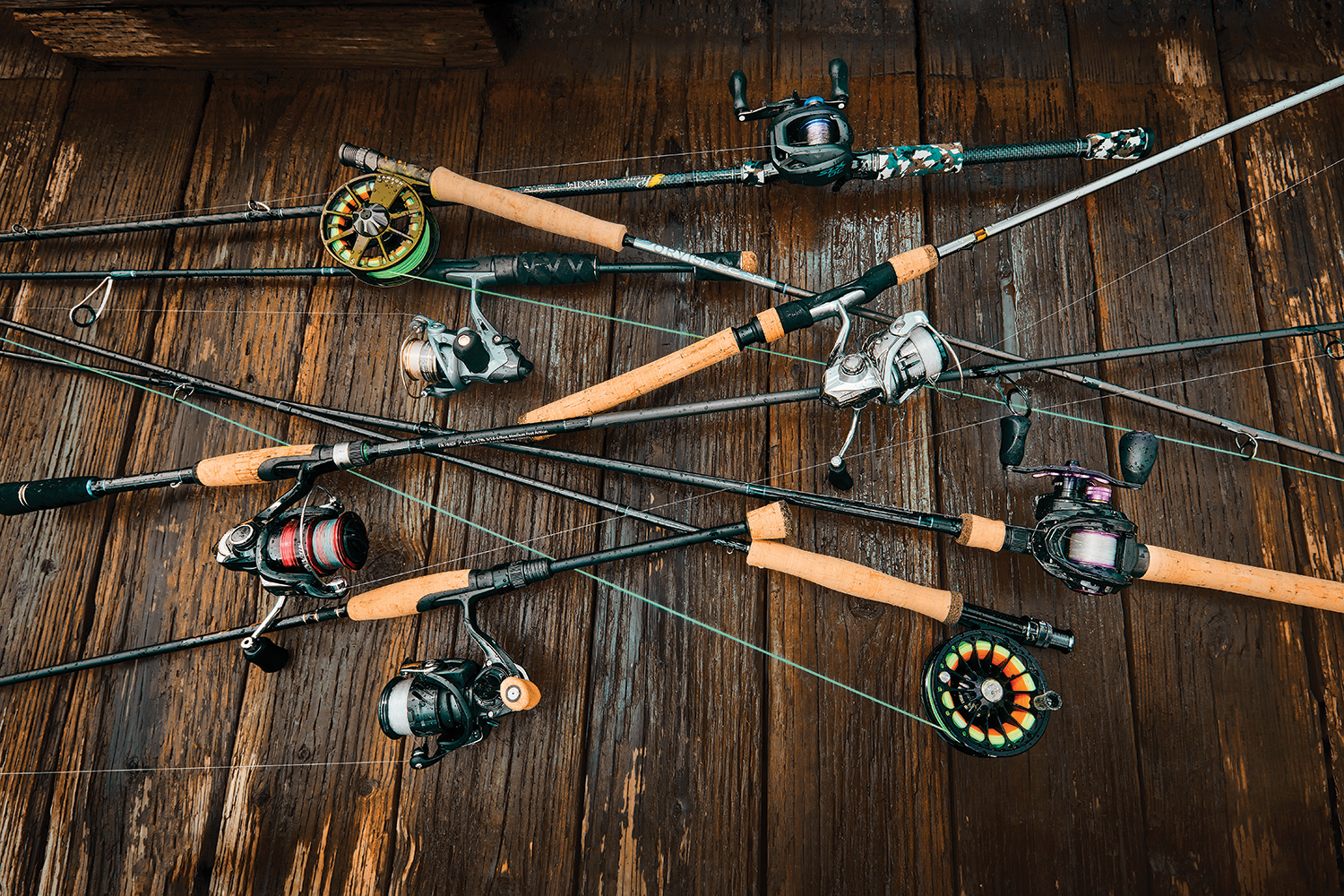
Credit: www.outdoorlife.com
Factors To Consider Before Purchasing A Spinning Combo
Investing in the right spinning combo is crucial for ensuring optimal performance while fishing. With numerous options available in the market, it can be overwhelming to make the right choice. However, by considering a few essential factors, you can narrow down your options and select a spinning combo that meets your needs.
Let’s explore these factors in detail:
Quality And Durability Of The Reel And Rod
- Opt for high-quality materials: Look for spinning combos made from durable materials such as graphite or carbon fiber. These materials offer excellent strength and durability, ensuring your combo lasts for years.
- Check the construction: Examine the construction of both the reel and the rod. Ensure that the reel has a sturdy frame with smooth and precise components. Similarly, the rod should have strong guides and a comfortable handle.
- Consider corrosion resistance: Fishing involves exposure to water, so it’s crucial to choose a spinning combo that has corrosion-resistant features. Reels with stainless-steel ball bearings and rods with corrosion-resistant guides are ideal for withstanding harsh conditions.
Appropriate Size And Weight For The Intended Use
- Determine the fishing technique: Consider the type of fishing you will be engaged in. Different techniques require different spinning combo specifications. For instance, if you plan to cast lightweight lures, you’ll need a lighter combo.
- Assess your target fish species: The size of the fish you aim to catch will influence your choice of spinning combo. Smaller fish may require a lightweight combo, while larger fish demand a heavier setup for better control and power.
- Consider portability: If you frequently travel or hike to fishing spots, consider a spinning combo that is lightweight and easy to transport. This will ensure convenience and ease of use during your fishing expeditions.
Smoothness And Gear Ratio Of The Reel
- Choose a reel with smooth operation: Look for a spinning reel with a high number of ball bearings, as this indicates smoother operation. Additionally, consider reels with quality drag systems that allow for easy line retrieval and smooth casting.
- Evaluate the gear ratio: The gear ratio determines the speed at which the line is retrieved. Higher gear ratios provide faster retrieval, making them suitable for techniques like fast lure presentations. Lower gear ratios offer more torque for handling larger fish.
To make an informed decision and select the best spinning combo, be sure to consider the factors above. By assessing the quality, durability, size, weight, smoothness, and gear ratio of both the reel and rod, you’ll ensure optimal performance and a great fishing experience.
Happy fishing!
Properly Balancing Your Spinning Combo For Optimal Performance
Finding the right balance in your spinning combo is essential for achieving optimal performance on the water. When your rod and reel are properly balanced, you’ll experience improved casting distance, accuracy, and overall control. Here are some key points to keep in mind when it comes to balancing your spinning combo:
Matching The Rod And Reel Weight
- The weight of your rod and reel should be compatible for optimal performance. A mismatched combo can lead to discomfort, decreased sensitivity, and poor casting.
- Select a spinning reel that is appropriate for the weight and power of your rod. Consider the recommended line weight and lure weight to ensure proper balance.
- Keep in mind that a lighter reel paired with a heavier rod may cause tip heaviness, while a heavier reel with a lighter rod can result in handle heaviness.
- Balancing the weight of your rod and reel will make long days on the water more comfortable and efficient.
Adjusting The Position Of The Reel Seat For Comfort And Control
- The reel seat is the component of your spinning rod where the reel attaches. Proper positioning of the reel seat is crucial for comfort and control.
- Experiment with the reel seat position to find the most comfortable grip and casting motion for your personal preference.
- Consider factors such as the length of your arm, the size of your hands, and your preferred casting style when determining the ideal position.
- The reel seat should allow for a comfortable and secure grip on the rod, enabling you to maintain control during both casting and retrieving.
Testing The Balance Of The Combo
- Once you have matched the weight of your rod and reel and adjusted the reel seat, it’s important to test the balance of your combo.
- Hold the rod and reel in one hand, with your finger resting near the front of the reel’s spool. The combo should balance evenly in your hand.
- If the combo feels tip heavy, you can try moving the reel seat slightly toward the butt of the rod to redistribute weight.
- On the other hand, if the combo feels handle heavy, adjusting the reel seat closer to the tip may help achieve better balance.
- A properly balanced spinning combo will enhance your casting accuracy, reduce fatigue, and improve overall fishing performance.
By properly matching the weight of your rod and reel, adjusting the position of the reel seat, and testing the balance of your spinning combo, you can ensure optimal performance on the water. Take the time to find the right balance, and you’ll reap the rewards in your fishing adventures.
Cleaning And Lubricating Your Reel
Maintaining your spinning combo is essential to ensure optimal performance and prolong its lifespan. One crucial aspect is keeping your reel clean and properly lubricated. This section will guide you through the process of removing dirt, debris, and saltwater residue, applying lubricant to the key components, and properly storing your reel.
Removing Dirt, Debris, And Saltwater Residue
To maintain your spinning combo’s performance, it’s crucial to regularly remove any dirt, debris, and saltwater residue that may accumulate. Follow these steps:
- Begin by disassembling your reel and removing the spool.
- Use a soft brush or toothbrush to gently brush away any visible dirt or debris on the exterior of the reel.
- Rinse the reel thoroughly with fresh water to remove any saltwater residue.
- Avoid using harsh chemicals or solvents, as they may damage the reel’s components.
- For stubborn dirt or grime, consider using a mild soap or specialized cleaning products designed for fishing reels.
- Ensure that all parts are completely dry before reassembling the reel.
Applying Lubricant To The Key Components
Proper lubrication is vital to ensure smooth operation and prevent premature wear and tear. Here’s how to apply lubricant to the key components of your spinning combo:
- Start by identifying the key areas that require lubrication, such as the gears, bail arm, and handle knob.
- Use a reel lubricant or oil specifically designed for fishing reels.
- Apply a small amount of lubricant to each of the identified areas, ensuring even coverage.
- Avoid over-lubricating, as excess lubricant can attract dirt and debris.
- After applying the lubricant, operate the reel to distribute it evenly throughout the moving parts.
- Wipe away any excess lubricant with a clean cloth.
Properly Storing Your Reel
Proper storage is essential to protect your spinning combo when not in use. Follow these tips to ensure your reel remains in optimal condition:
- Before storing your reel, ensure it is clean and dry to prevent corrosion or damage.
- Store your spinning combo in a cool, dry place away from direct sunlight and extreme temperature fluctuations.
- Consider using a reel cover or case to provide additional protection from dust, debris, and accidental impact.
- Avoid storing your reel in a damp environment or directly on a hard surface, as this may cause damage.
- If you plan to store your reel for an extended period, consider loosening the drag to relieve pressure on the internals.
- Regularly inspect and clean your stored reel to prevent any potential issues when you’re ready to use it again.
By following these simple cleaning, lubrication, and storage practices, you can ensure that your spinning combo performs optimally and lasts for many fishing adventures to come. Keep in mind that regular maintenance is key to preserving the quality and functionality of your reel.
Maintaining And Inspecting The Fishing Rod
When it comes to maintaining your spinning combo for optimal performance, one of the key aspects is taking care of the fishing rod itself. By regularly inspecting and maintaining your rod, you can ensure that it remains in great condition and performs at its best.
Here are some important steps to follow when maintaining and inspecting your fishing rod:
Checking For Any Damages Or Weak Points
Regularly inspecting your fishing rod is essential to identify any damages or weak points. By detecting these issues early on, you can prevent them from worsening and potentially causing a failure during your fishing trips. Consider the following key points when inspecting your rod:
- Carefully examine the entire length of the rod, looking for any visible signs of damage such as cracks, chips, or splintering.
- Pay close attention to the rod guides, which are the small rings that hold the fishing line in place. Check if they are secure, aligned properly, and free from any damage or bending.
- Inspect the reel seat, ensuring that it is secure and functioning correctly. Look for any cracks or looseness that may affect the stability of the reel.
- Check the rod handle for any signs of wear or damage, such as peeling grips or loose cork.
- Gently flex the rod to assess its overall strength and flexibility. Any signs of unusual bending or stiffness may indicate an issue.
Cleaning And Protecting The Guides And Reel Seat
Keeping your rod’s guides and reel seat clean and protected is crucial for maintaining its performance. Here are the key steps to clean and protect these components:
- Remove any dirt, debris, or fishing line residue from the guides and reel seat using a soft brush or cloth.
- To clean the guides, you can use a mild soap solution and gently scrub them with a soft brush or cloth. Rinse thoroughly and dry before fishing.
- To protect the guides and reel seat, consider using a specialized rod protectant or lubricant. Apply a small amount to each guide and reel seat, following the manufacturer’s instructions.
- Regularly check and replace any worn or damaged guide inserts to ensure smooth line flow.
Replacing Worn Or Damaged Rod Components
Over time, certain components of your fishing rod may wear out or become damaged. It’s important to replace these components promptly to maintain optimal performance. Here are some key components to watch out for:
- Rod guides: If you notice any cracked or broken guide inserts, it’s advisable to replace them. Damaged guides can cause line wear and reduce casting distance.
- Reel seat: If the reel seat becomes loose or damaged, it can compromise the stability of your reel. Consider replacing it to ensure a secure fit.
- Rod tip: If the rod tip becomes overly flexible or breaks, it’s essential to replace it. A damaged tip can affect your casting accuracy and overall sensitivity.
Remember, maintaining your fishing rod is essential for prolonging its lifespan and ensuring optimal performance. By regularly inspecting for damages or weak points, cleaning and protecting the guides and reel seat, and replacing worn or damaged components, you can keep your spinning combo in great shape for many successful fishing trips.
Line Care And Replacement
Maintaining your spinning combo involves more than just keeping the reel clean and lubed. Your fishing line plays a crucial role in your fishing success, so it’s essential to give it proper care and attention. Whether you’re a seasoned angler or just starting out, here are some key points to consider when it comes to line care and replacement:
Inspecting And Cleaning The Fishing Line
Inspecting and cleaning your fishing line should be a regular part of your maintenance routine. Here’s how to ensure your line stays in top condition:
- Inspect for wear and damage: Before each fishing trip, carefully examine your fishing line for any signs of wear, fraying, or damage. Pay close attention to the sections closest to the hook or lure, as they are most susceptible to abrasion. If you notice any weak spots or damage, it’s time to replace the line.
- Cleaning the line: To keep your fishing line performing optimally, it’s essential to clean it regularly. After each fishing session, use a soft cloth or rag to wipe down the line, removing any dirt, debris, or salt deposits. This simple step will help prevent corrosion and extend the life of your line.
- Using line conditioner: Consider using a line conditioner specially designed for fishing lines. These products can help reduce friction, enhance casting distance, and improve overall line performance. Follow the manufacturer’s instructions for the best results.
Regularly Replacing Worn Or Weak Fishing Line
Over time, fishing line can become worn, weakened, or compromised due to repeated use and exposure to sunlight, water, and other environmental factors. Here’s why it’s crucial to replace your fishing line regularly:
- Maintain strength and durability: As a fishing line ages, it can become less durable, making it more prone to snapping or breaking when under pressure. By replacing your line at appropriate intervals, you’ll ensure that it maintains its strength and reliability.
- Prevent line breakages: Fishing with worn or weak line increases the risk of losing fish. Weakened line reduces your hook-setting power and may fail to withstand the fight of a big fish. Stay on the safe side by replacing your line regularly to avoid frustrating line breakages and missed opportunities.
- Improved casting performance: Fresh fishing line casts smoother and farther compared to worn-out line. By regularly replacing your line, you’ll experience better casting performance, allowing you to reach those hard-to-reach spots and increase your chances of catching more fish.
Selecting The Right Type And Pound Test For Your Fishing Needs
Choosing the right fishing line is crucial for maximizing your fishing success. Consider the following factors when selecting the type and pound test for your fishing needs:
- Fishing technique: Different fishing techniques require different types of fishing lines. For example, if you’re fishing in heavy cover or around structure, a more abrasion-resistant line like braided or fluorocarbon may be suitable. On the other hand, if you’re finesse fishing or targeting line-shy fish, a lighter fluorocarbon or monofilament line might be the better choice.
- Target species: The size and strength of the fish you’re targeting will influence the pound test you should choose. Lighter lines are suitable for smaller fish, while heavier lines are necessary for larger, hard-fighting species. Consider the strength of the fish and the fishing conditions to determine the optimal pound test for your needs.
- Casting distance and sensitivity: If long casting distance or increased sensitivity is essential to your fishing style, consider using a low-diameter, higher-pound-test line. Thinner lines offer less water resistance, resulting in longer casts, while the increased sensitivity allows you to feel even the slightest nibble.
Remember, maintaining your fishing line is as important as maintaining your reel. By inspecting and cleaning your line regularly, replacing worn or weak line, and selecting the right type and pound test for your fishing needs, you’ll ensure your spinning combo performs at its best, setting you up for success on the water.
Casting Techniques For Accurate And Long Casts
Want to improve your casting game and achieve accurate and long casts with your spinning combo? Look no further! In this section, we will cover the essential casting techniques that will help you enhance your performance on the water. Read on to learn how to properly load and release the rod, adjust the drag settings on the reel, and practice different casting techniques.
Properly Loading And Releasing The Rod:
To achieve accurate and long casts, it is crucial to know how to load and release the rod effectively. Here are a few key points to keep in mind:
- Grip and stance: Start by gripping the rod with your dominant hand and extend your arm fully to ensure maximum control. Adopt a stable stance with your feet shoulder-width apart for better balance and control during casting.
- Loading the rod: As you prepare to cast, smoothly and swiftly bring the rod back behind you, utilizing the power of your wrist and arm. Remember to keep the motion fluid and avoid any jerky movements.
- Timing and power: Once the rod is loaded, the timing of the release is crucial. Aim to release the rod when it reaches the optimal position, usually pointing at your target. Combine the timing with an appropriate amount of power by using your wrist and arm to propel the line towards your desired spot.
- Follow-through: After releasing the rod, it’s important to follow through with your casting motion. Allow the tip of the rod to continue moving in the desired direction until it comes to a natural stop. This follow-through motion helps in achieving better accuracy and distance.
Adjusting The Drag Settings On The Reel:
Adjusting the drag settings on your reel is essential for achieving optimal performance during casting. Consider the following points when adjusting your drag settings:
- Understanding drag: The drag system on the reel is designed to control the amount of resistance experienced when a fish pulls on the line. By adjusting the drag, you can customize it to match the target species and the fishing conditions.
- Balancing tension: Striking the right balance with the drag settings is crucial. You want enough tension to tire out the fish, but not so much that it breaks your line. Practice adjusting the drag to achieve the desired amount of resistance.
- Testing and fine-tuning: Before heading out on your fishing trip, take the time to test and fine-tune your drag settings. Check that the drag slips smoothly when the line is pulled and make any necessary adjustments to ensure optimal performance.
Practicing Different Casting Techniques:
Mastering a variety of casting techniques will elevate your fishing skills and improve your accuracy and casting distance. Here are some techniques to practice:
- Overhead cast: The most common casting technique, the overhead cast involves casting the line over your head in a fluid motion, generating both distance and accuracy.
- Sidearm cast: This technique involves extending your arm outward and casting parallel to the water’s surface. It is particularly useful when fishing in tight spaces or under low-hanging obstacles.
- Roll cast: The roll cast is perfect for situations where backcasting space is limited. It involves using the tension of the line against the water to load the rod and propel the line forward.
- Pitching: Pitching is a technique used to place your bait or lure precisely in a specific target zone. It involves a short, underhand cast with a compact motion.
- Skipping: Skipping is a technique used for targeting fish in areas with overhanging cover, such as docks or fallen trees. It involves casting the line low and sidearm with a slight upward flick of the wrist, causing the lure to skip across the water’s surface.
By practicing these different casting techniques, you’ll become a more versatile angler, capable of accurately reaching your desired fishing spots and increasing your chances of landing that trophy catch.
Now that you have a good understanding of the casting techniques necessary for accurate and long casts, it’s time to hit the water and put your newfound knowledge to the test. Happy casting!
Setting The Hook And Controlling The Fish
Maintaining proper tension on the line:
- Maintaining proper tension on the line is crucial for setting the hook and controlling the fish.
- Use your index finger to apply the right amount of pressure on the line as it leaves the reel.
- Keep the line taut during the entire process to ensure a solid hookset.
- Avoid letting the line go slack, as it could result in a missed fish or a lost catch.
- Maintain a steady tension while reeling in the fish to prevent it from getting off the hook.
Using the rod’s flexibility to your advantage:
- The flexibility of your fishing rod can play a significant role in setting the hook and controlling the fish.
- When you feel a bite, swiftly raise the rod tip to quickly set the hook in the fish’s mouth.
- The rod’s flexibility helps absorb the fish’s initial lunge or aggressive movements, preventing the line from breaking.
- Keep the rod tip up while reeling in the fish to maintain control and prevent it from darting in unpredictable directions.
- Utilize the rod’s flexibility to tire out the fish gradually, making it easier to land.
Handling the fish with care:
- Once you have successfully set the hook and brought the fish closer to you, it’s essential to handle it with care.
- Wet your hands before touching the fish to prevent removing its protective slime layer.
- Use a landing net or lip-gripping tool to secure the fish, minimizing stress and potential injury.
- Avoid squeezing or applying excessive pressure to the fish’s body, as it can harm its vital organs.
- If you need to remove the hook, do it quickly and carefully, using a pair of pliers or a hook remover tool.
- Lastly, release the fish gently and as close to the water as possible, allowing it to swim away unharmed.
Remember, success in fishing not only depends on the gear you use but also how well you handle each step of the process. So, setting the hook and controlling the fish requires maintaining proper tension, using the rod’s flexibility to your advantage, and handling the fish with care.
By following these tips, you’ll increase your chances of having optimal performance in your spinning combo. Happy fishing!
Proper Storage And Transportation Of Your Spinning Combo
Safely Disassembling And Organizing Your Combo
Properly disassembling and organizing your spinning combo for storage is essential to maintain its optimal performance. Follow these key points to ensure the longevity of your gear:
- Clean your combo: Before disassembling your spinning combo, make sure to clean it thoroughly. Remove any dirt, sand, or debris from the reel and rod to prevent damage.
- Gently disassemble: When disassembling your combo, handle each component with care. Slowly and gently separate the reel from the rod, being mindful of any delicate parts or connections.
- Organize and label: Keep everything organized by labeling each component. This will make it easier to reassemble your combo later. Use small labels or tape to mark the reel, rod, and any additional parts or accessories.
- Store separately: To prevent tangling or damage, it’s crucial to store the reel and rod separately. Place the reel in a protective case or bag, and use rod holders or racks to keep the rod secure and upright.
Choosing The Right Storage Containers And Rod Holders
Using suitable storage containers and rod holders are essential to protect your spinning combo from damage and ensure its longevity. Consider the following points when choosing storage options:
- Protective reel cases: Invest in a padded reel case that provides protection against impact and prevents scratches or dings. Look for cases specifically designed for spinning reels to ensure a snug fit.
- Rod holders and racks: Choose rod holders or racks that securely hold your fishing rod in an upright position. Opt for holders made from durable materials that can withstand the weight of the rod and prevent it from falling or bending.
- Waterproof containers: When storing your spinning combo, opt for waterproof containers to prevent moisture damage. Sealable plastic boxes or bags with a waterproof seal are ideal for protecting your gear from water, humidity, and other elements.
- Proper ventilation: Ensure that your storage containers have proper ventilation to prevent the build-up of moisture or condensation. This will help prevent rust or corrosion from developing on your spinning combo.
Tips For Traveling With Your Spinning Combo
Traveling with your spinning combo requires special care and attention to ensure its safety during transit. Follow these tips to ensure a hassle-free journey for your gear:
- Use a travel case: Invest in a quality travel case designed specifically for fishing gear transportation. These cases provide added protection against impact, ensuring your spinning combo remains intact.
- Secure inside vehicle: When traveling by car, make sure to secure your spinning combo safely inside the vehicle. Avoid placing it somewhere it can shift or slide during the journey. Opt for the trunk or use a rod holder specifically designed for car transport.
- Protect fragile components: For particularly delicate spinning combos, consider removing the reel and packing it separately. Wrap the reel in a soft, protective cloth or place it in a reel case to prevent any damage.
- Check airline regulations: If you’re traveling by air, familiarize yourself with airline regulations regarding fishing gear. Some airlines have specific guidelines or restrictions for carrying fishing rods and reels on board, so make sure to adhere to their requirements.
By following these tips for proper storage and transportation of your spinning combo, you can ensure its longevity and optimal performance. Taking the necessary precautions will help protect your gear from damage and allow you to enjoy many successful fishing trips.
Conclusion
To ensure that your spinning combo performs optimally, it is crucial to maintain it properly. By following the tips and guidelines mentioned in this blog post, you can extend the lifespan of your spinning combo and enhance its performance on the water.
Regularly cleaning and lubricating the reel, checking the line and replacing it if necessary, and inspecting the rod for any damages are essential maintenance steps. Additionally, storing your spinning combo in a safe and protected environment will prevent any potential harm.
Remember to handle your gear with care and avoid exposing it to harsh conditions. With proper maintenance, your spinning combo will continue to perform at its best, providing you with many successful fishing trips ahead. Invest some time in keeping your spinning combo in top shape and enjoy a seamless fishing experience every time.
Happy fishing!

